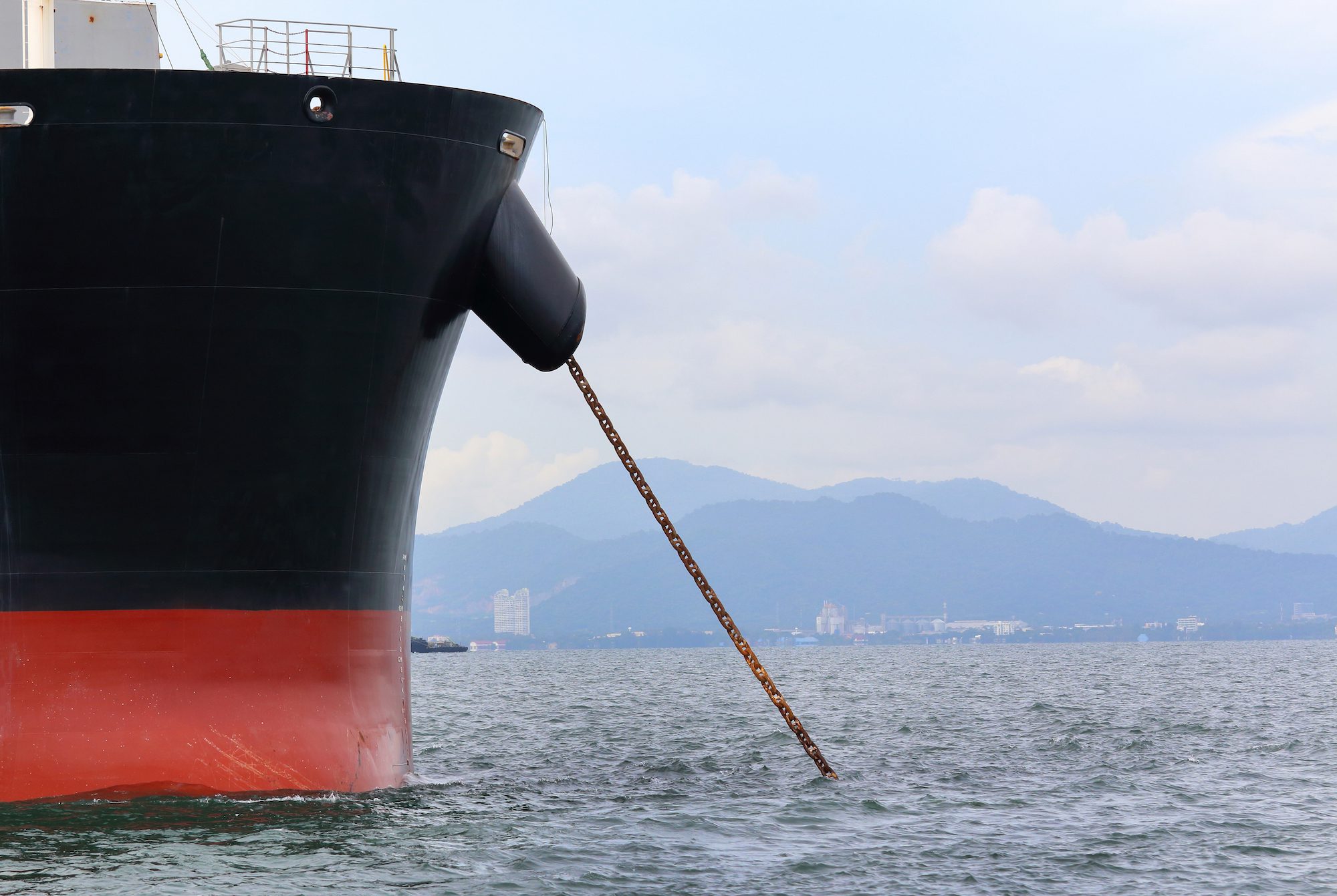U.S. Customs Revenue Tops $100 Billion for First Time Amid Tariff Surge
US revenue from customs duties this fiscal year surpassed $100 billion for the first time, reflecting higher tariffs imposed by the Trump administration.

By Barry Parker (gCaptain) –
In a recent press release, shipping industry participants Greenheart, Njord, and Marsoft announced that they have entered into a “Green Tech Partnership Underpinned by Carbon Credits,” where Njord will design a package of fuel-saving technologies on four Greenheart-owned vessels. Marsoft role will be to quantify and certify the CO2 savings through carbon credits.
There is a lot to unpack here. In this first article of a series that I will call “The Carbon Chronicles,” which is being written less than three months in advance of the IMO’s MEPC 80 meeting (which has the potential to set the stage for maritime decarbonization stretching out decades from now), let’s begin unpacking.
Reducing carbon emissions from shipping will cost a lot of money. In this case, we are talking about retrofitting four existing vessels to lower their fuel consumption. The media release suggests that the reductions could range between 7% to 16%. The reduced fuel consumption could come from installing fuel-saving tools chosen from “a portfolio of more than 20 technologies.” These might include retrofitting devices to improve water flow around the propeller, such as through a post-swirl duct or pre-swirl duct and/or propeller modification, coating a vessel’s hull with new anti-fouling silicone-based paints, or investing in air lubrication systems that create a carpet of air under the vessel.
Readers are more likely curious about the money flows than the technologies. The mechanism announced in early April falls within the bailiwick of “Voluntary Carbon Markets.” These markets are different from the widely touted “Compliance Markets,” which are mechanisms mandated by governmental authorities and regulators, such as the European Union’s “Emissions Trading Scheme” and others. Future articles will get into these. In the “Voluntary” markets, capital expenditures (think vessel retrofits; Greenheart is a tanker owner with a capital budget) are certified by independent third-party validators as being legitimate. The entity expending the funds for those ducts and paints (or other technologies) then becomes the holder of a “carbon offset” that can then be sold.
The buyer of the “offset,” tied to the price of one metric tonne of CO2, could be another shipowner (some owners have bought such offsets in the wider marketplace), but not necessarily. The buyer could be an entity that is emitting carbon from its ongoing operations, such as in a manufacturing business (or even at an oil company). Though the buyer might not be instantly reducing its carbon output (refineries last a long time), it can pay the shipowner seller. In effect, the buyer is paying the cost for reducing overall carbon emitted. In very rough terms, each metric tonne of maritime fuel comes with three tonnes of carbon emission. A particular vessel retrofit that saves two tonnes of fuel consumption per day would be reducing CO2 by six tonnes each day. So, over the vessel’s life, that retrofit will bring about tens of thousands of tonnes of CO2 not emitted. For the shipowners crunching the numbers, the upfront retrofit has a capital cost. The payback will be fuel cost savings over time, but also the hard cash inflow from selling an accredited offset.
The exact pricing of the offset (and the potential gains to shipowners) will be determined by market forces in the Voluntary market, which is smaller in size than that of the various Compliance markets. Not surprisingly, these prices go up and down. Recent prices per tonne of carbon can be garnered from “SPGVCLWT” (seriously), an index of voluntary carbon prices launched by Standard & Poor’s in late June 2022. It was priced at $54.70 when it launched and was pegged at $17.58 in mid-April 2023.
These mechanisms are real. Consider paint supplier AkzoNobel (parent company of International Marine Coatings), a pioneer in these techniques. According to this supplier, “The pioneering participants in AkzoNobel’s ground-breaking carbon credits program are now reaping their first commercial rewards. Early adopters of the first-ever initiative in shipping include Greek tanker and bulker operator, Neda Maritime.”
They explain that following the application of “Intersleek®” hull coating, the owner provides data to a verifying organization. In this case, it is “Gold Standard” (the same folks working with Marsoft) on fuel savings for the whole docking cycle prior to and after the application of the coating. They put some real numbers on the benefit, saying, “The shipowner has generated 17,168 independently validated carbon credits earned as a result of proven cuts in carbon emissions from its tanker vessel, Argenta.” That’s real money. At a recent price of $22/metric tonne (the SPGVCLWT price in early April 2023), the value of those credits works back to just under $400,000.

Sign up for gCaptain’s newsletter and never miss an update

Subscribe to gCaptain Daily and stay informed with the latest global maritime and offshore news


Stay informed with the latest maritime and offshore news, delivered daily straight to your inbox
Essential news coupled with the finest maritime content sourced from across the globe.
Sign Up